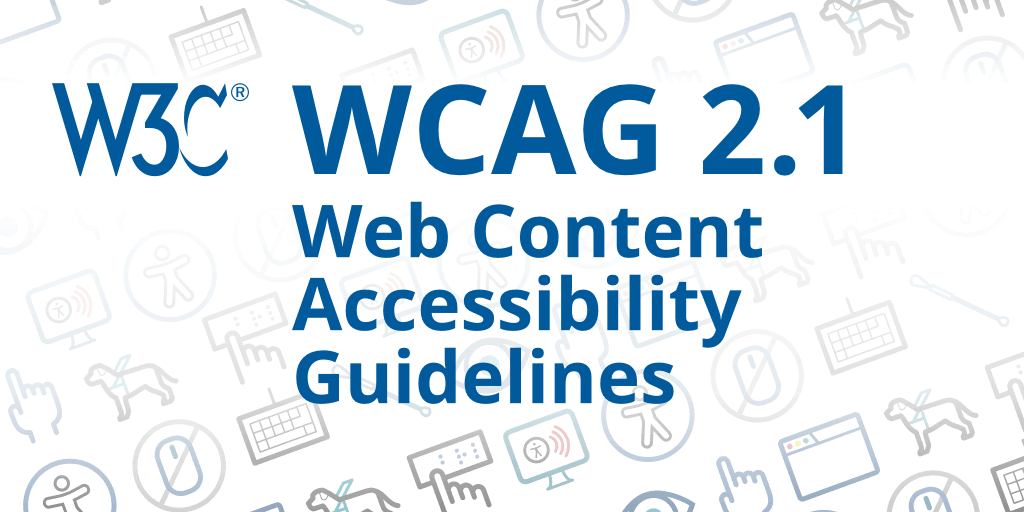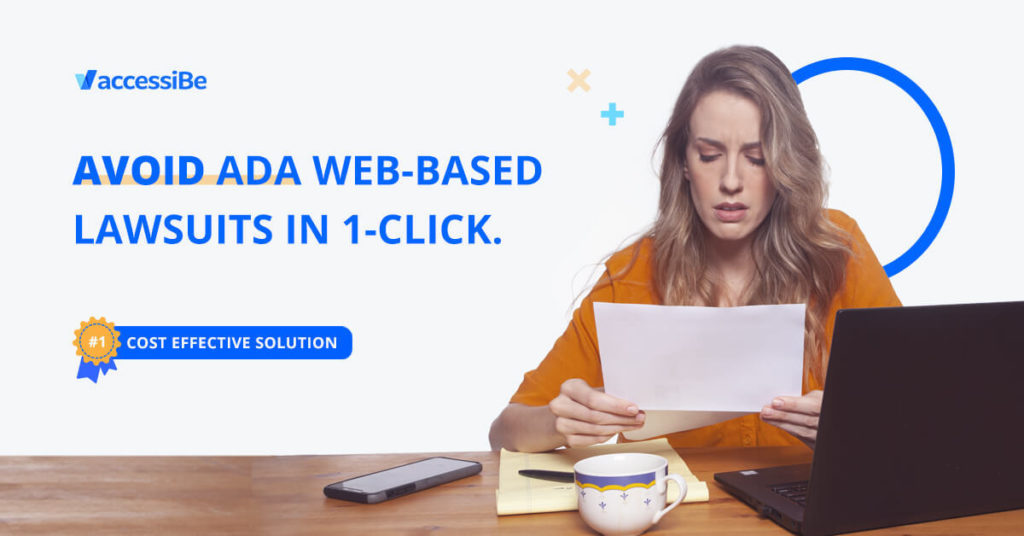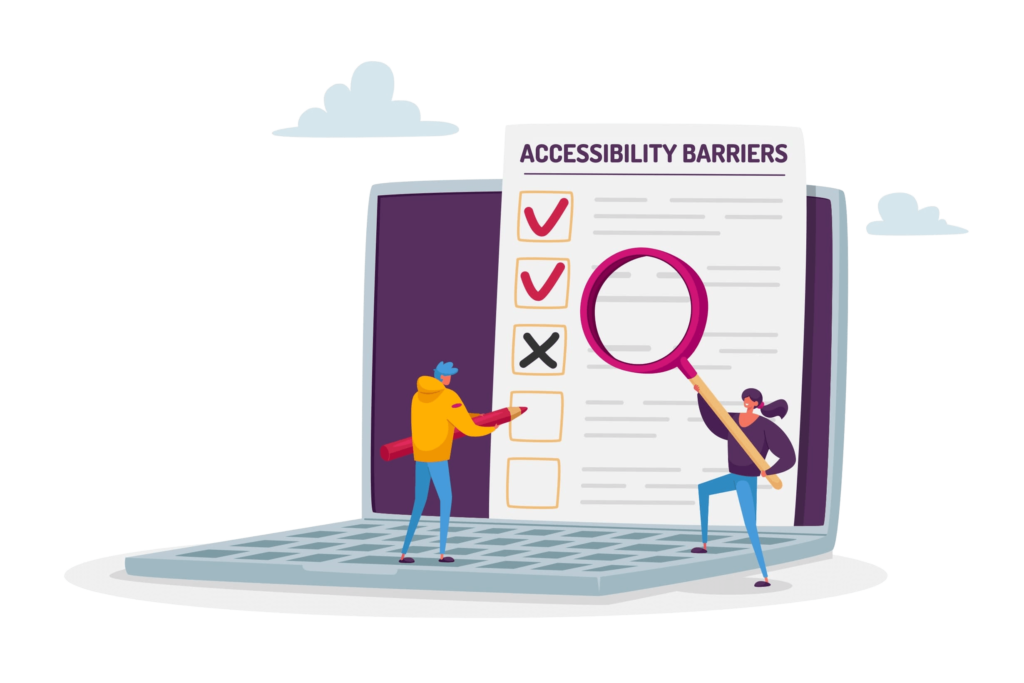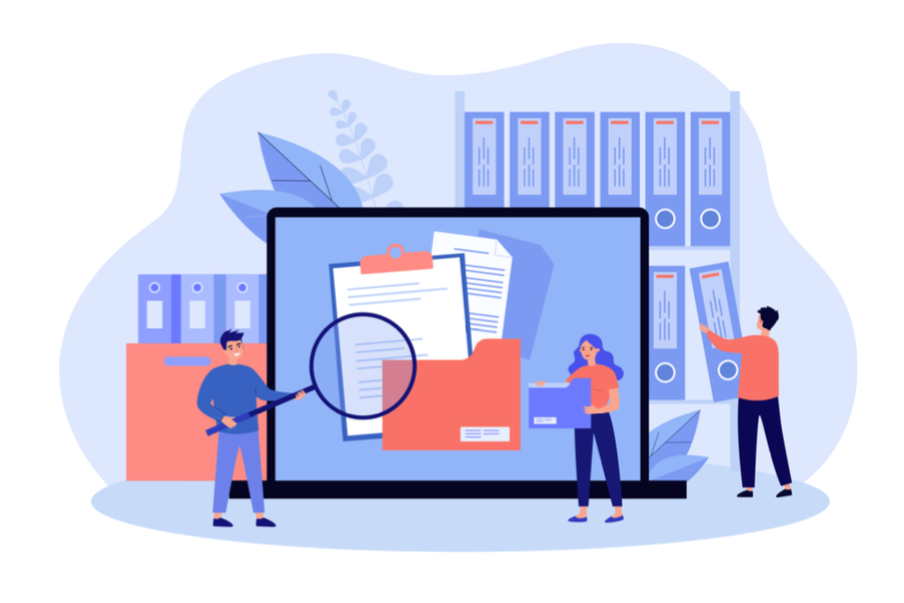
As a website owner, you probably have heard about web accessibility compliance. For both public and private websites, there are international standards for accessibility. Different countries have set their regulations, but there is one leading guideline everyone follows: WCAG. WCAG stands for Web Content Accessibility Guidelines. These guidelines are assigned by the organization that regulates the international standards for the Internet, known as the Worldwide Web Consortium (W3C). If you have a website, it is safe to state you should follow the WCAG compliance.
What are the WCAG guidelines?
The Web Content Accessibility Guidelines are several guidelines that have become the international golden standard for all laws that regulate web accessibility today. The guidelines are several recommendations intended to make internet content accessible to all but mainly for people with some disabilities.
History of WCAG Compliance
Gregg Vanderheiden assembled the first web accessibility guide in 1995. Web accessibility was first mentioned during the Second International Conference on the World-Wide Web (WWW II). It was at the start of the digital revolution. Following the release of the first guide, more organizations started to give their input. Thirty-eight new regulations followed and were combined in the Unified Web Site Accessibility Guidelines. The WCAG 1.0 is based on the eighth version of the Standardized Website Usability Guidelines and was published in 1999.
WCAG 1.0 Compliance
There are fourteen guidelines in WCAG 1.0; these guidelines include all the general principles and themes of web accessibility. Each guideline has its checkpoint, 65 checkpoints for all the policies, to how to implement it to your website. It defines how each guideline is applied to specific web page features, following a priority system. Priority one is the requirements that must be implemented. Priority two is requirements should be implemented. Priority three is requirements may be implemented.
- Guideline 1: Alternatives to audio and visual content is provided
- Guideline 2: Colors are not the base of the content
- Guideline 3: Style sheets and markups are used properly
- Guideline 4: Natural use of language
- Guideline 5: Tables are readable and used in the right way
- Guideline 6: Pages transform gracefully
- Guideline 7: User control is enabled for content that changes
- Guideline 8: Embedded user interfaces are accessible
- Guideline 9: Responsive design
- Guideline 10: Temporary solutions for users
- Guideline 11: Implementation of W3C technology and guidelines
- Guideline 12: Context and orientation information is provided
- Guideline 13: Clear navigation mechanism is provided
- Guideline 14: All documents are clear and simple
WCAG 2.0 Compliance
The digital world is ever-changing, and therefore the guidelines needed to be updated as well. Nine years later, the new WCAG 2.0 guidelines were launched. 2.0 is based on WCAG 1.0, but they have taken it a step further to align with the standards of 2008. The guidelines are based on four main pillars or principles: POUR. POUR stands for Perceivable, Operable, Understandable, and Robust. Under the criteria Perceivable and Operable, there are four guidelines outlined. The pillar Understandable includes three guidelines, and Robust has one guideline. Like WCAG 1.0, this version of W3C web accessibility rates the guidelines following three main test levels: A, AA, and AAA.
Perceivable
- Guideline 1.1: Alt texts need to be provided for all non-text content.
- Guideline 1.2: Alternatives are provided for time-based media.
- Guideline 1.3: Content needs to be presented in different ways without losing information or structure.
- Guideline 1.4: Users should be able to see and hear all the content.
Operable
Operable states that user interfaces and navigation have to be operable.
- Guideline 2.1: All functionalities need to be available from a keyboard.
- Guideline 2.2: Enough reading time is provided.
- Guideline 2.3: Content design won’t cause seizures.
- Guideline 2.4: User navigation made easy, find content, and determine where they are.
Understandable
Information and the operation of the user interfaces must be understandable.
- Guideline 3.1: The content text is readable and understandable.
- Guideline 3.2: Web pages should operate consistently.
- Guideline 3.3: Users can correct mistakes.
Robust
All web content has to be robust enough to be interpreted reliably by a wide variety of user agents, including assistive technologies.
- Guideline 4.1: Maximize integration, including assistive devices, for existing and potential user agents.
What Is the Difference Between 1.0 and 2.0?
The WCAG 2.0 has made significant improvements on the 1.0. The whole structure of the guidelines has been changed and is based on four important pillars: POUR. The considerable difference between WCAG 1.0 and WCAG 2.0 is that the guidelines are more based on different technology software. Nowadays, websites are not solely focused on HTML. Web accessibility is also mandatory for files, PDFs, spreadsheets, Google docs, mobile apps, e-books, and online presentations. All of the above-listed fall within the bracket of digital assets. Generally, WCAG 2.0 is based on the digital world we know today.
WCAG 2.1 Compliance
Two and a half years ago, the latest version of the WCAG came out: WCAG 2.1. Ten years after WCAG 2.0 release, in these ten years, the Internet has changed tremendously. The main difference between 2.0 and 2.1 is
WCAG 2.1 discusses web improvements and how technology can provide fair access to all users. Among WCAG 2.0 and WCAG 2.1, there are 17 differences.
Perception
Web page visitors should be able to access web information using at least one of their physical senses.
- 1.3.4 Orientation (AA)
- 1.3.5 Define Intent of Input (AA)
- 1.3.6 Identify intent purpose (AAA)
- 1.4.10 Reflow of 1410 (AA)
- 1.4.11 Contrast Non-Text (AA)
- 1.4.12 Spacing Text (AA)
- 1.4.13 Content on Hover (AA)
Operable
The web page interface should be easy to use, even for disabled users.
- 2.1.4 Main Shortcuts for Characters (A)
- 2.2.6 Timetous (AAA)
- 2.3.3 Animation from Interactions (AAA)
- 2.5.1 Gestures of Pointers (A)
- 2.5.2 Cancelling Pointer (A)
- 2.5.3 Name label (A) (A)
- 2.5.4 Actuation of Motion (A)
- 2.5.5 Target Dimension (AAA)
- 2.5.6 Processes of Concurrent Input (AAA)
Understandable
Everyone with at least one physical sense must be able to understand the information on the web pages.
Robust
The website must be able to be interpreted across several browsers, as well as braille monitors and other screen readers.
- 4.1.3 Messages for status (AA)
Why Accessibility Is Important
WCAG states that the primary goal should be to give all of your web visitors the best web experience. People with specific disabilities should not be left out of enjoying the experiences you offer on your website. If you live without disabilities, it is understandable you do not immediately think about the barriers your website might have. Therefore it is important to take a look at the compliance standards WCAG states. Abiding by WCAG compliance standards, you can rest assured that your web visitors can have easy access to all your website content, and isn’t that what you want? If your web visitors can enjoy the best web experience, it will increase and maintain web page visitors. As good as it is for your web visitors to have an excellent experience, it is also mandatory by law.
Does W3C Have a Certification Program?
As mentioned earlier in this article, the WCAG guidelines fall under the W3C. The W3C set up the Web Accessibility Initiative (WAI). WAI is an initiative to increase accessibility for people with disabilities to the World Wide Web (WWW or Web). As an international community, W3C’s main task is to frequently develop and improve standards to ensure the web’s long-term growth and usage. So far, W3C has succeeded in developing 335 technical standards to ensure the web works for everyone. W3C provides routine updates to make the general public aware of their goals, efforts, and progress. Reports are regularly released to the world to keep every abreast of their tremendous work. However, W3C mainly informs the public. They do not hand out certifications.
Which Countries Are WCAG Compliance Important?
Compliance with WCAG is essential in many countries. It is also identified as the universal guideline for web accessibility compliance. However, while the importance of WCAG is recognized in many countries, the degree of enforcement and importance varies from country to country.
Canada and the US are two countries in which enforcement is of vital importance. In these two nations, adherence to the WCAG 2.0 requirements is obligatory under federal law. Besides, many states in the United States have also felt the need to integrate WCAG 2.0 into their regulations on online accessibility.
Countries in South America, such as Argentina, Brazil, Bolivia, Chile, Columbia, Peru, Ecuador, Uruguay, Venezuela, also take WCAG enforcement very seriously.
Since 2010, WCAG compliance has become mandatory in Europe for all public sector websites to comply with all the WCAG 2.0 Levels of AA requirements laid down. In addition to this regulation, countries such as Denmark, Finland, Germany, France, Iceland, Italy, Switzerland, and the Netherlands also have their respective legislation on web accessibility to ensure that these requirements are applied. Ireland, the United Kingdom, and Norway have even reached the point of applying their private sector regulations.
It is also worth noting that EU websites are mandated to allow users who cannot access web content to provide input. According to the directive, genuine grievances are to be rectified.
Countries like China, Japan, South Korea, India, and Israel have adopted policies on Asia’s continent to ensure compliance with the WCAG requirements or its derivatives.
Countries like New Zealand and Australia also have accessibility standards for all government departments and websites.
Conclusion
Today, both public and private websites should comply with the international web accessibility standards of WCAG compliance. The latest version of the WCAG is 2.1. Not only should website owners be responsible and inclusive, but it also benefits all individuals with or without disabilities. When following WCAG, you can be confident you comply with international law, and your visitors enjoy access to web content with ease. For more information about all the different compliance per country, take a look at our other articles on ADA and AODA.
Become WCAG compliant today and enjoy a 10% discount on top of that with accessiBe!













